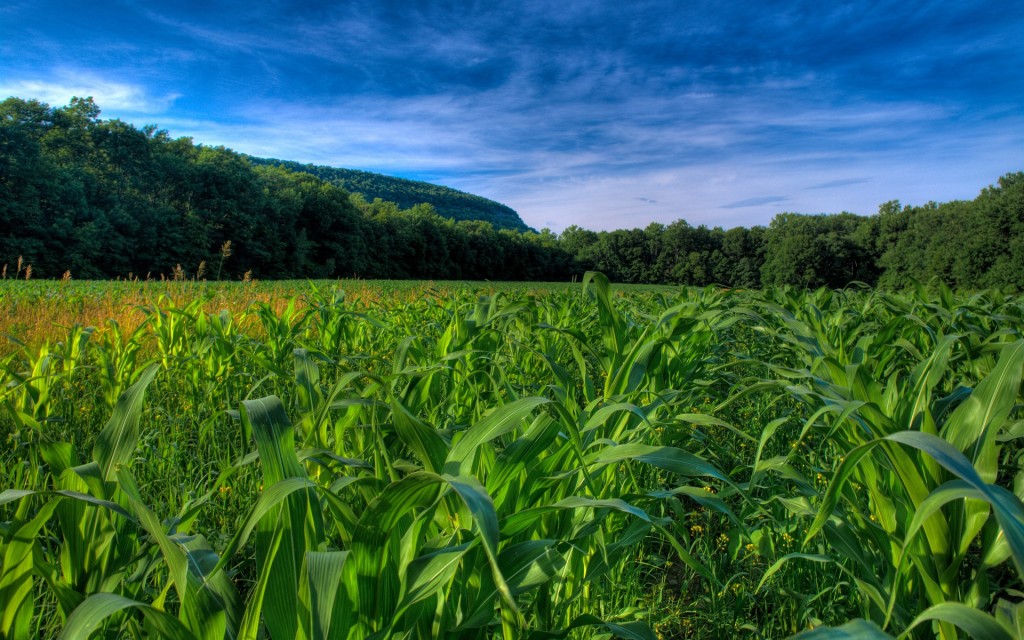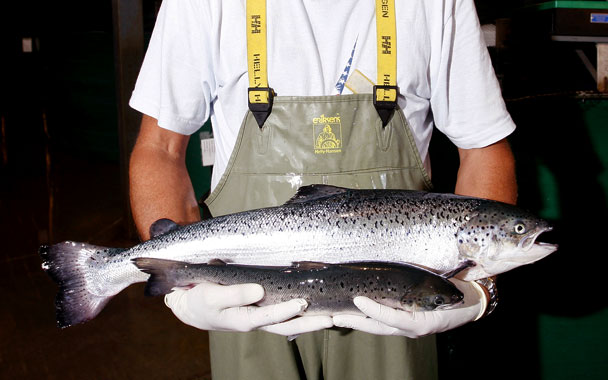Probably one of the most talked about subjects and controversial topics is that of GMO and it is a very sensitive one to many of my readers here in Panama. Some people feel that the subject has been beaten to death, others like myself welcome the discourse as a way of learning more about the basic need of man to produce more protein per hectare. The population will double in the future and the land mass will not. If we do not find methods of increasing productivity, starvation will be an even bigger problem in the world. Even here in our little country of Panama, we have a GMO research facility and I welcome the idea of more research. The one thing that stands out is that people have the right to choose and if you do not want to be involved in this, you can opt out. However, without proper labeling, the public will not know. I have gathered a little research and opinion from people in the food business here in Panama and welcome further comment.
First a little background on GMO in an article that I read that appeared to be well balanced and very informative.
GENETICALLY MODIFIED ORGANISMS
by Subhuti Dharmananda, Ph.D., Director, Institute for Traditional Medicine, Portland, Oregon
For centuries, humans have altered plants and animals by selective reproduction (breeding, hybridizing). As a result, we have a wide range of domestic animals and plants grown for food and for a variety of non-food uses (such as for fibers and decorative purposes and as a source of fuel). These efforts to adjust the characteristics of organisms in nature do not involve direct genetic modification by humans, but involve human actions working with existing natural processes for selection of traits. These traits are in the genes, so there are some differences in the genes of the original and modified versions of the plants and animals.
Direct genetic modification is a relatively new process based on a set of technologies that alter the genetic makeup of living organisms, including animals, plants, bacteria, or fungi by inserting genes rather than using cross-breeding and selection techniques. The purpose of the modification of the genes is to derive certain benefits. Genetic modification is accomplished by inserting one or more genes from one organism into a different organism (for example, from bacteria into a plant or from one species of plant into another). Combining genes from different organisms is known as recombinant DNA technology (“gene splicing”), and the resulting organism is said to be “genetically modified,” “genetically engineered,” or “transgenic.” The end product we use may be part of the genetically modified organism itself (e.g., the beans of the soy plant) or something produced by the modified organism (for example, a drug produced by fermentation using modified bacteria or fungi). More…
_________________________________
My friend Price Peterson has a finca here that produces the top coffee in Panama and maybe the top in the world and he also operates the larges dairy here in Chiriqui.
Price suggests that we need to work with GMO as a means for feeding the world in the future. He is also a big proponent in producing more protien per acre or hectare here in Panama. He has done actual research on a simply study about beef and dairy that he sums up as follows:
“Once, a number of years ago, I went through the numbers comparing beef production and milk production to see which produced more protein/ha. To my surprise, the dairy operation was well ahead of beef.”
He has limited supplemental inputs for his dairy cows as they are primarily range feed on grass. Another thing Price points out is that ….
“If the New World order took the advice of many anti GMO organizations, instead of a child dying every seven seconds from malnutrition (in Asia and Africa), it would likely go to a child every 4 to 5 seconds. That is truly unacceptable.
Luis Rios started up and built Fertica SA, our largest fertilizer/agrochem. Company. He and his wife are also the owners of Batipa and Oteima, a university here in Panama that specializes in training leaders, entrepreneurs and professionals committed to the sustainable human development of the country through the generation, dissemination and application of knowledge in areas of teaching, research, extension and production. Their University is recognized for educational excellence and continuous improvement, which is reflected in its accreditation, utilization of technology and promotion of sustainable development. Luis’s comment about GMO is on point in my opinion.
“I disagree with those who oppose all that is innovation for agriculture. It must be borne in mind that as the population continues to grow, food and fibre requirement will be rigged, and is limited by the amount of land for production. Only with research and development of new products and innovative production techniques may be given to future needs. The cost of a new product for agriculture is much greater than a medicine for human health, because the requirements for approval are extremely more strict because in addition to the safety testing the human must prove safety to the environment. This topic is widely known to us which we have been in the business of the protectors of plants and all sorts of inputs.”
Ralph Dessau who has done some good work here in Panama in research summed GMO up nicely
“much of the evolution on earth as far as I know was caused by “mutations” which is nature’s way of producing GMOs.”
A great article written by Ralph appears here
Let’s look at what is being done here in Panama that is cutting edge research.
GMO Salmon
GMO salmon have been developed and FDA tested here in Boquete. As my friend Price states “It is not only remarkably cutting edge science for Central America, but also a real winner in terms of protein/ha. It is also interesting in a couple of other ways. One is that it is a case where the genetic modifications are very clear, simple and easy to explain to a layman. The second is that it is the first GMO animal product certified safe by the FDA both nutritionally and environmentally. This will likely open the door for a whole series of other GMO animals waiting in line.”
Not everyone agrees with that statement and many people are really scared that these fish might actually leave the mountains and end up in the Gulf of Chiriqui. That would be interesting and add to the variety fish I like to catch but highly unlikely to happen.
On a more serious side, lets look at the facts
GMO: AquAdvantage salmon is the trade name for a genetically modified Atlantic salmon developed by AquaBounty Technologies. A growth hormone-regulating gene from a Pacific Chinook salmon and a promoter from an ocean pout were added to the Atlantic’s 40,000 genes. These genes enable it to grow year-round instead of only during spring and summer. The purpose of the modifications is to increase the speed at which the fish grows, without affecting its ultimate size or other qualities. Conventional salmon growers publicly challenged the claimed growth rates.[1] The fish grows to market size in 16 to 18 months rather than three years.[2] The latter figure refers to varieties whose growth rate has already been improved by 2:1 as a result of traditional selective breeding. More from Wikipedia
Here is another article that I read that talks about the possible dangers of GMO Salmon from Evan Kleiman in a Good Food article
Three Issues That Aren’t Being Discussed in the GMO Salmon Debate
I spent some time last week wading through literature on the first transgenic (GMO) animal going through the FDA approval process. It’s Aqua Bounty’s AquAdvantage Salmon. The AquAdvantage is a “domesticated” Atlantic Salmon with two “modifications”. One is a growth factor output gene from a wild Chinook Salmon; the other is a “promoter, the molecular “switch” from the antifreeze protein gene is used” (these quotes come directly from the Aqua Bounty website). This promoter overrides the growth factor turnoff switch to enable growth hormone to work in the fish 24 hours a day, 7 days a week instead of the three month time limit it has in wild Chinook Salmon.
For this week’s Good Food segment on the transgenic salmon debate we interviewed two scientists – Michael Hansen from the Consumer’s Union and Gregory Jaffe from the Center for Science in the Public Interest – to get as broad a range of opinion on the animal as possible. Due to the time constraints of our on-air segments, certain issues weren’t discussed. Three issues weren’t able to be fully fleshed out.
First of all, as a society have we had a full discussion about whether we feel we need transgenic animals to feed us? The focus on the AquAdvantage Salmon and the FDA’s expanded public comment period is basically giving us the opportunity as consumers to think about and discuss the pros and cons of going down a road which once built will be hard to close. In fact it may be too late. As discussed in the on-air interview, the comment period for the FDA (which ends April 26th) is purely for issues of food safety. Consumer and retail likes and dislikes are not part of the process for regulatory approval
And that brings me to issue two, the allergen load on us. Just sitting in the chair behind the mic at KCRW doing interviews every week for years I’ve heard myriad scientists, doctors and parents express concern about the increasing allergen reactivity in children. No one really knows why there is such a huge increase in asthma and other sensitivities. According to Hansen, the tests related to the possible allergenicity of the transgenic salmon were not as robust as some FDA committee members would have liked. This issue is another reason why our society needs to have discussion regarding transparency and labeling, which is my third concern.
We live in a polarized political environment that surrounds so many issues affecting the daily life of the American consumer. We hear the word democracy bandied about by all sides. I can’t really think of any personal right more important than making decisions on how we want to eat and feed our families. When you talk about taking responsibility for personal decisions shopping for what we put into our bodies is pretty much one of most basic daily tasks. We should be able to know where the food we opt to put in our shopping bags comes from and how it is “made”. Then we can make our own choice as consumers. When marketers hold back that information they are making the decisions for us.
Aqua Bounty Technologies will not be directly producing the farmed salmon and bringing it to market. They will be producing transgenic eggs for sale to fish farmers. Perhaps the farmers will label the fish on boxes that go to retail outlets. Will those retail outlets who decide to carry the fish let us know that these are transgenic animals?
I asked Jaffe if the genetically engineered fish would be required to have a label. He didn’t know the answer, but he did say the FDA has the authority to require labeling. Whether they require labeling on the whole fish, the individual steaks or allow no labeling at all remains to be seen.
Hear my conversation with Hansen and Jaffe. More….
Summary
So in summary, there are no sure answers but one thing stands out. There needs to be research and the main goal should be to deliver healthy and better ways to make our finite farm land more functional and more productive. This will not come by protesting and shutting down innovation.
Next week we visit the GMO Salmon facility and speak with the owner about this exciting project.


